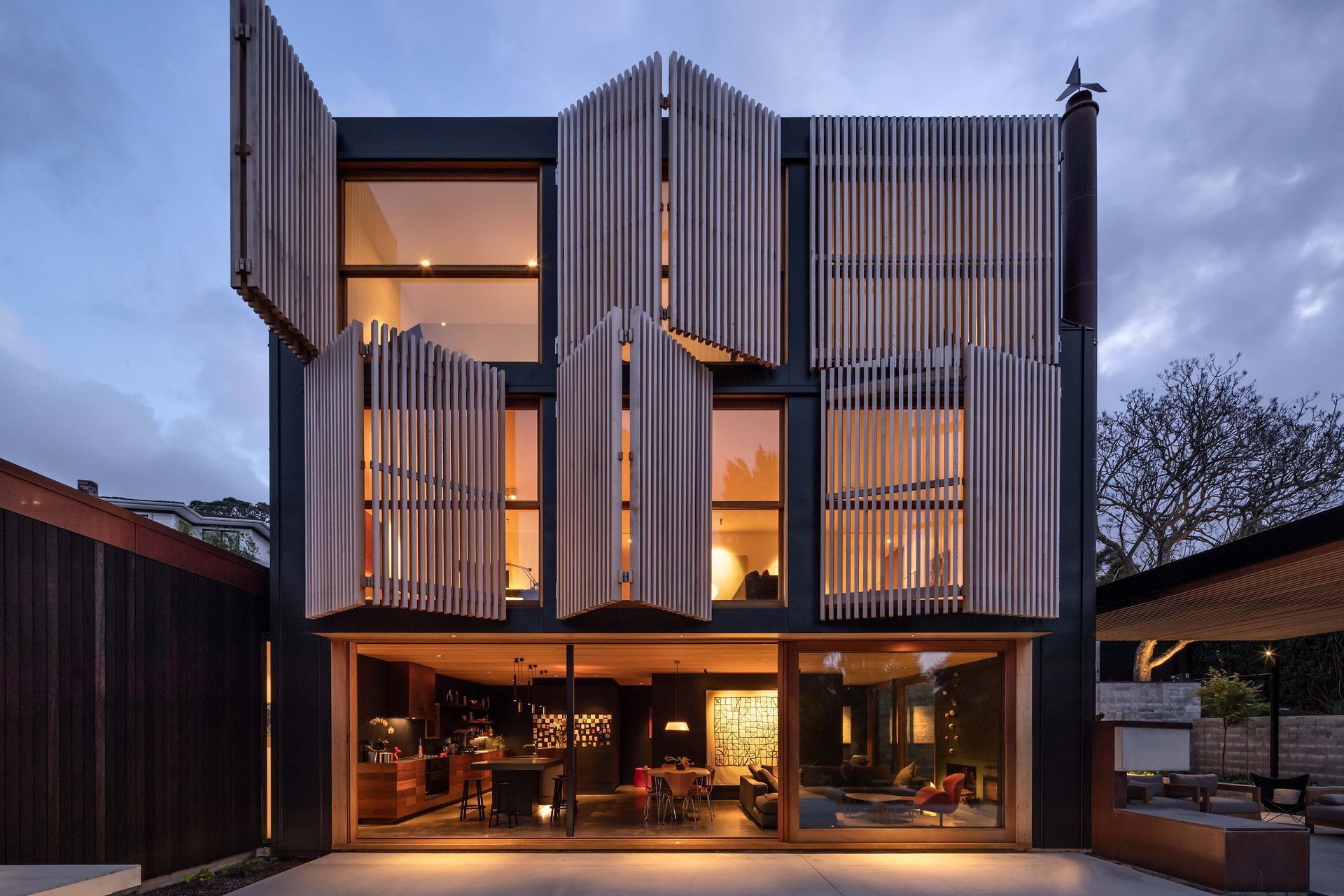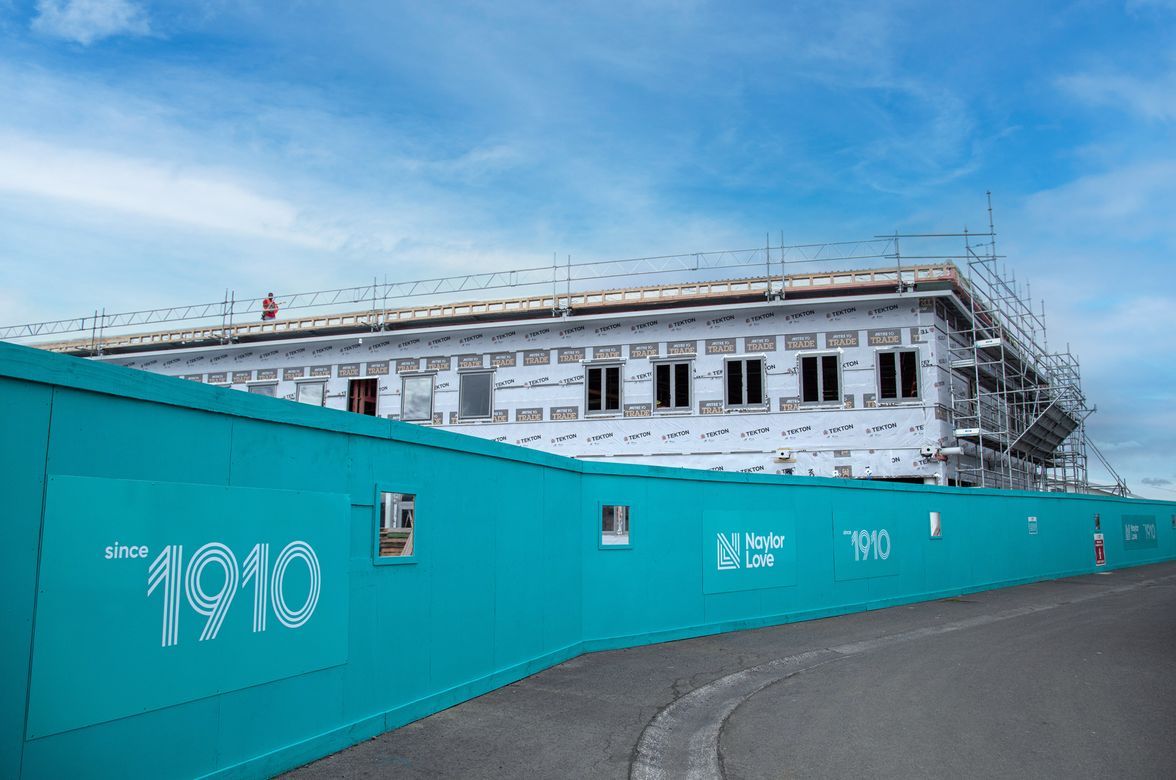Looks aren’t everything in an architect’s own home
An architect’s own home doesn’t just need to look the part—it also needs to feel right. Paul Clarke, architect at Studio 2 in Auckland, used GreenStuf insulation to create a luxurious feeling of comfort and liveability in his self-designed home at #3 Ngapuhi Road.
As an architect, Clarke specialises in bespoke houses. His work is more about responding to the unique needs of clients and environments than following architectural trends. “I really love working with one-off clients,” he says, “creating something that’s special and meaningful to them. I don’t really like the idea of having a style. It’s more about appropriateness to people and to site, and to the conditions of the environment we’re working with.”
The house Clarke designed for himself is no exception. The New Zealand Institute of Architects (NZIA) describes Clarke’s property as “a thoroughly liveable house that sits confidently in its secluded garden environment.” They note that “high-quality materials and elegant details are deployed to good effect in developing a contemporary family house.”
Creating the right feel with the right insulation R value
Clarke’s decision to use GreenStuf insulation products in his own home is revealing. Architecturally designed homes are often judged by their appearance—by their visually captivating designs and features. When people watch the TV show Grand Designs, their judgements of the houses are based purely on what they see. Yet in designing his own home, Clarke wanted to ensure that it wouldn’t just look like a house befitting an architect of his calibre. He also wanted to be sure it felt like such a home. After all, his house is first and foremost a place for him and his family to live.
GreenStuf insulation was essential for creating a liveable feeling at #3 Ngapuhi Road. Clarke used a range of products—Wall Pads, Roll Form, Sound Solution, and Acoustic Sound Blanket (ASB)—to ensure all rooms in the house would feel both comfortable and inviting. “On the exterior walls we had thicker framing, so we wanted to maximise the amount of insulation within those walls. To do that, you need a product that is reasonably rigid but that also has a high insulation R value.” The insulation R value of an insulation product is a measure of its ability to stop hot or cold air passing through it. As Clarke was well aware, GreenStuf products perform strongly above average on this measure.
Insulation for a better environment
Sustainability was another key concern that led Clarke to choose GreenStuf. “The big thing for me and for us as a family was trying to create something that doesn’t use a lot of energy,” he says. Quality insulation reduces the need for interior heating and cooling, so the thermal blanket that makes Clarke’s house feel so liveable on the inside also reduces its environmental impact. “We now look at the buildings we design in terms of how we can maximise the amount of insulation we can put in, so that the buildings work environmentally and seasonally. We want houses that are cool in the summer and warm in the winter.” The high insulation R value and rigidity of products like GreenStuf Wall Pads and Roll Form ensure both these boxes are ticked.
GreenStuf’s zero-waste manufacturing line and commitment to using at least 50% recycled materials in all its products were additional considerations that attracted Clarke. “The recycling of material, if we’re talking about insulation, that’s perfect because it’s taking something that was waste and turning it into something that’s actually going to create warmth.”
Spreading the word about good performance
How did the experience of using GreenStuf in his own home influence Clarke’s work at Studio 2? “Doing it for yourself is quite interesting,” he reflects, “because you actually are the client and you’re the architect, so you’re thinking a lot about it for you personally, but then there’s a follow-on, too, where you’re thinking ‘Is that a product that I need to be suggesting to other people to improve their buildings?’ ”
Judging by his feedback, Clarke’s answer to his own question is a definite “Yes.” The feeling of liveability and comfort that GreenStuf products provide for him and his family in their new home, combined with the company’s market-leading sustainability credentials, mean that he now recommends GreenStuf without reservation.
Clarke believes that good architecture requires “really thinking about how people connect to the environment they’re in, and how they want to use it, and how they want to experience it with family and friends.” That means he is also a strong believer in the importance of insulation that enhances people’s relationships with their environment, whether that environment is the house they live in or the natural environment we all depend on.





























